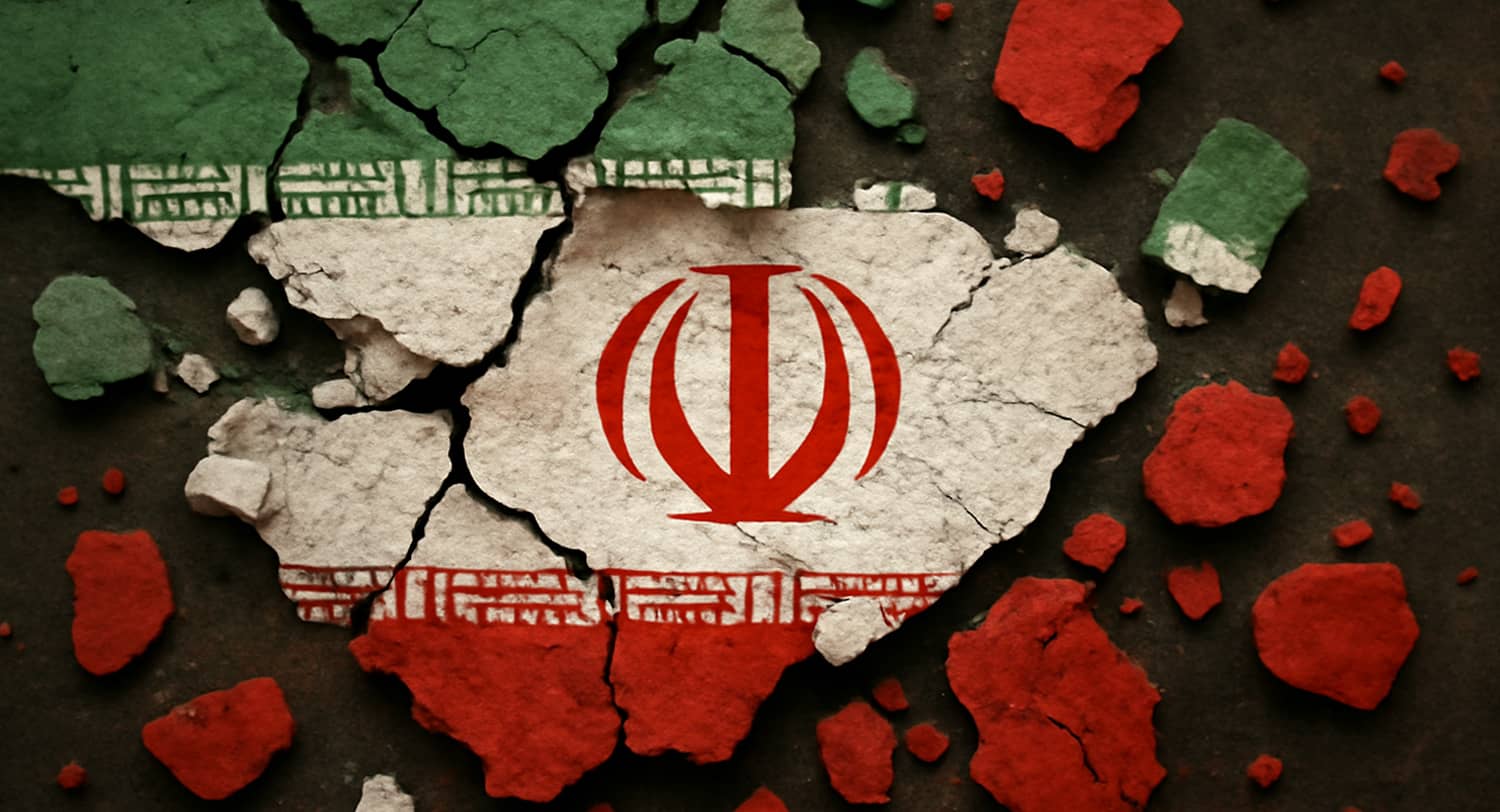The 12-Day War and President Trump’s conclusion of it did little to resolve a range of non-nuclear Iranian threats. These include drones (which attack American allies from Kyiv to Tel Aviv), terrorist proxies, and assassination plots inside America. If past is prologue, then Tehran will again seek to bloody America wherever and however it can, both to reconsolidate power at home and reestablish some measure of leverage against Washington.
Dealing with these threats requires a policy not of regime change but of regime collapse. This approach would not seek to directly replace the Iranian government through full-scale military intervention, but to systematically weaken it and allow domestic alternatives to replace it. Israel’s experience in Syria illustrates how pursuing regime collapse could be the best choice for addressing the Iranian threat.
Regime collapse differs from regime change in three key ways.
First is objectives. While regime change seeks to oust a government from power, regime collapse focuses on making it harder for a government to carry out functions and maintain authority.
Second is timing. Regime change is about a specific moment in time; regime collapse strategy accepts that it cannot know when its efforts might bear fruit.
Third, regime collapse leaves the actual task of toppling and replacing existing power structures to the people inside that country. By weakening a government’s ability to exercise power, regime collapse is like the game of Jenga—the goal is to set the regime teetering while others make it finally topple.
In Syria, Israel backed into regime collapse unintentionally. No one foresaw that a consequence of decimating Hizbullah would be removing Bashar al-Asad’s primary shock troops, without whom Syrian forces did not even try to defend against the advance of Turkish-backed rebels. Once Asad fell, Israel eliminated Syria’s formidable conventional and chemical weapons capabilities to make sure that any new Syrian regime could not access them.
There are two weaknesses of this strategy. First is the unpredictability of when collapse might occur, and the uncontrollability of what happens afterward. It is possible that regime collapse in Iran will be enough to set the country on a new, brighter course, just as the NATO air campaign against Serbia contributed to the downfall of Slobodan Milosevic.
But the counter example is Libya, where US strikes led to the downfall of Moammar Ghaddafi and a protracted civil war. It is possible that destabilizing the regime could lead to internal conflict and humanitarian suffering. Such a possibility cannot be ruled out. Already in Iran some Kurdish groups have suggested that they will now take up arms against the state in search of autonomy. But one might point to the weakening of the regime forces and reduction of its available weaponry as making the situation less deadly than it otherwise might be
Even if a worse regime did somehow emerge, Israel’s significant reduction of Iranian military assets precludes their ability to pose a significant threat. With many proxies decimated, half of their ballistic missile launchers destroyed, some ground, air, and naval assets struck, and their military leadership decapitated, were the Iranian regime to collapse, whoever replaces it would struggle to project power at home or abroad for the foreseeable future. But since Israel’s elimination of Iranian military assets has not been as thorough as what it accomplished in Syria, preventing a post-mullah regime Iran from rearming itself will have to be an international priority.
And while the nature of a post-Islamic Republic Iran is unknown, there is reason to believe the risks of regime collapse might well be lower than in a country lacking the preconditions that contributed to the chaos of Syria or Libya. For one, the potential for a conflict as bloody and long as the Syrian civil war occurring in Iran is decidedly diminished by the fact that it was external interference in Syria —principally from Iran and Russia—that stoked and prolonged that conflict.
Nor is Iran as deeply divided along ethno-sectarian cleavages as is Syria. While there are national minorities, such as the Kurds, Azeris, and Baloch, that seek greater cultural rights or autonomy, it is usually countries governed by autocratic minorities, not majorities, (the Alawites in Syria, the Sunnis in Iraq) that seem to have the most brutal civil conflicts. Additionally, recent flashpoints that could have sparked separatism in Iran instead turned into national political protests. Consider, for example, how the killing of Mahsa Amini, a young Kurdish girl, by regime security forces turned into the nation-wide Woman, Life, Freedom movement, not just an expression of Kurdish anger.
Additionally, Iranian society has broad support for democratic governance and normalized relations with the United States. This suggests that a secular, democratic opposition could emerge in Iran in a way that it was not present in other Middle Eastern countries. Widespread protests have swept Iran repeatedly over the twenty years, touching on almost every segment of Iranian society—students, urban middle class, teachers, laborers, rural farmers, and women. Their growing lists of grievances focus on the regime’s corruption, repression, and mismanagement of the country’s economy and natural resources.
The second weakness of a regime collapse strategy is the fact that, unlike in Syria, there is no organized opposition waiting in the wings. Steps to weaken the regime will not be enough unless the Iranian people are ready and able to oppose the regime.
To address this weakness, the United States, working with international partners, should seek out, engage with, and offer training to any democratic, secular opposition that arises organically inside Iran. This can and should include replicating the strategy of activating economic grievances to build a political movement, like the creation and victory of the Solidarnosc labor union in Poland, by reaching out to Iranian laborers affected by the regime’s economic and energy mismanagement. It should include the historically powerful merchant class of bazaaris, the young women and men who risked their lives to decry the brutal death of Mahsa Amini, and students who might be brought to Europe and the United States to study on scholarship, to witness what a free society has to offer, and bring the flame of liberty back home. And it should include Iranian minority groups, like Kurds, Azeris, and Baluch, who dream of greater autonomy but might be unsure whether to seek it on their own or as part of a new, free Iran.
The United States has taken tentative steps toward supporting the goal of regime collapse—providing Starlink access to Iranians otherwise cut off from the internet and recalling journalists for its Persian-language broadcasting service. These measures need to be expanded to ensure that Iranians have access to both objective news reporting and a means to communicate among themselves.
Additional steps should be taken to weaken the regime and hasten its departure. Working with Israel’s intelligence networks inside Iran, as well as those of its European partners, the United States should be offering Iranian officials payouts and safe haven to abandon the regime. It should also make sure that the regime’s top leadership knows it has an off-ramp. Just as Assad’s decision to allow the collapse of his regime was made easier by knowing that he and his family could flee to Moscow, so too, Iran’s rulers are less likely to hold out if they believe they have options other than hanging on to power or hanging from cranes.
In its 46 years, Iran’s theocratic regime has been responsible for killing 241 US servicemembers in the 1983 Beirut barracks bombing and another 603 during the Iraq war. It has plotted assassinations on American soil. At home, in just the last two years, Iran has executed nearly 2,000 of its own citizens. It is already the world’s leading state sponsor of terrorism and scored a meager 11 on Freedom House’s global ranking, worse even than Russia or Venezuela.
The nature of a regime collapse strategy is that it does not choose who will replace the mullahs in Tehran. It is impossible to predict where and when the impetus to stand up to the regime, or a leader brave enough to do it, will emerge.
George Kennan, when he recommended a Cold War strategy that would have as its objective “either the breakup or the gradual mellowing of Soviet power,” could not have known that the first blow for democracy in the Soviet Union would be struck by an electrician in a Polish shipyard. Who will deliver it in Iran is similarly unknowable. But the odds that such a blow is struck, and that it is struck for freedom, not more oppression, will be made more likely by the United States embracing a regime collapse strategy now.

